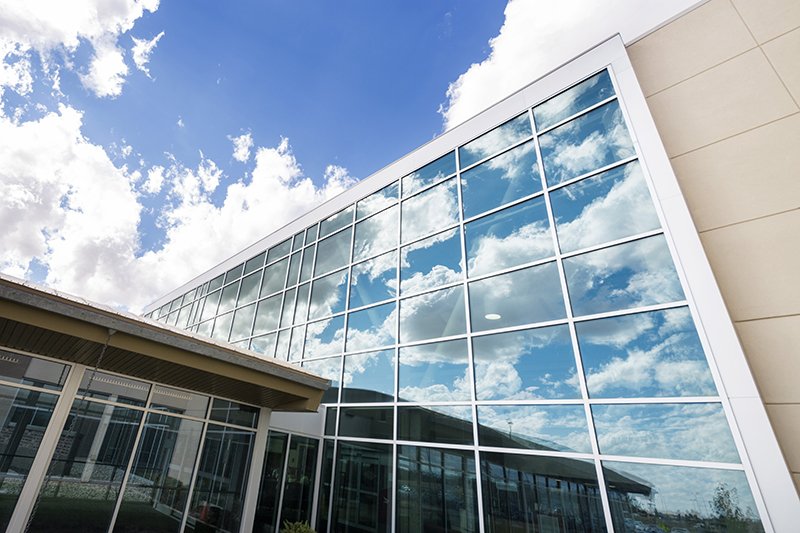
Ensuring indoor air quality in hospitals and other healthcare facilities
Studies have confirmed that even in modern healthcare facilities with mechanical ventilation and active scavenging systems, employee exposure to various gaseous compounds is still commonplace. By combining sufficient ventilation with waste gas scavenging and continuous air monitoring and sampling, safety professionals can substantially improve both patient and working staff safety in these facilities.
Indoor air quality in hospitals and other healthcare facilities has been a hot topic for decades. Negative health effects of waste hospital gases such as WAGs (waste anesthetic gases) and vaporized disinfectants (formaldehyde, ethylene oxide) are widely known. Hospitals and healthcare facilities have a unique collection of potentially risky compounds, which in turn increases the pressure to monitor and control air quality in these facilities. In the past, there have been situations, where poor indoor air quality (IAQ) in hospitals has had devastating effects on the overall health and recovery of patients and staff.
Hospitals and healthcare facilities have a unique collection of compounds, exposure to which can have both acute and long-term effects on health
Despite the issue of hospital air quality being well acknowledged by safety professionals, regular exposures still occur among the staff working in these locations (1). Improved solutions and new innovations in healthcare air ventilation, gas scavenging and air quality monitoring are at the forefront of minimizing these exposures. When done right, these are central elements in ensuring good indoor air quality in hospitals and other healthcare facilities, thereby minimizing negative airborne health effects.
Functioning ventilation
When planning the ventilation of a health care facility it is crucial to plan with the room function in mind. Engineers and systems designers work together with medical planners and relevant staff in order make the ventilation fit the room or facility in question. Especially in places like operating rooms where various gaseous compounds are used, ventilation needs planning to meet those needs. Wards and recovery rooms also have very specific demands, with almost 24/7 occupation of persons with limited self-preservation capabilities.
Waste gas scavenging
Hospitals use scavenging systems to gather medical waste gases. Scavengers are mostly used in hospital operating rooms to gather waste anesthetic gases, but they apply to the collection of various types of gases or aerosols. Scavenging is important in maintaining safe exposure limits set by various governing bodies.
Active Air Monitoring
In order for the personnel in hospitals and other healthcare facilities to evaluate the effectiveness of ventilation and scavenging in ensuring safe environmental conditions, the air in the facility needs to be actively sampled and analyzed. Modern analyzers make it possible to get instantaneous results from a room or facility. This way safety professionals can connect cause and effect when the concentration of a certain compound exceeds the approved limits, and quickly apply the necessary improvements.

Gasmet GT5000 Terra analyzer represents the next generation of hospital air quality monitoring. Learn more
What to monitor?
What follows is a description of a few gaseous compounds most often found in hospitals and healthcare facilities that are likely to cause negative health effects – both in the long and short term. Each short section describes the use of the compound with related health issues.
Waste Anesthetic Gas Monitoring
Waste Anesthetic gases or WAGs are typically found in operating rooms, dental facilities and veterinaries. Long-term exposure to WAGs is connected to various negative health effects, such as negative fertility and an increased risk for miscarriages. WAGs typically find their way into the open environment through leaks in the anesthesia machine, poorly fitted face masks or through patient exhales in recovery rooms. Examples of the specific WAGs include halothane (CF3CClBrH), enflurane, isoflurane (CF3CHClOF2H), volatile anesthetic agents like desflurane (C3H2F6O) and sevoflurane (C4H3F7O), and nitrous oxide (N2O).
To learn more about WAG-related air monitoring practices, read more here.
Disinfection and Sterilizing substances
Cold sterilization is the process where reusable semi-critical items are immersed into a liquid sterilization chemical. Disinfectants used in cold sterilizing often include formaldehyde or glutaraldehyde, both of which can have negative health effects (eye etching, headaches, nausea, difficulty in breathing, dermal irritations, etc).
Surgical smoke
Surgical smoke is generated as a byproduct of electrosurgery and laser ablation. It is often generated when an electrosurgical unit is used in an operation, causing the cell membranes to heat and rupture. In recent years the health effect of surgical smoke has been addressed. Acute health effects of surgical smoke are headaches, eye and throat irritation, nausea, drowsiness and dizziness (2). Surgical smoke has also been shown to carry viruses and live bacteria.
The unknown
Cases have been reported, where over 50 percent of the total volatile organic concentration in an operating room stemmed from somewhere else than anesthetic gases or sterilants. Therefore modern gas analyzers allow users to compare the air sample to a large library of compounds, thus making it possible to identify even unexpected gases.

